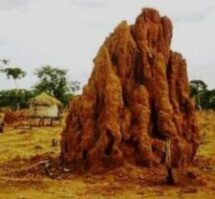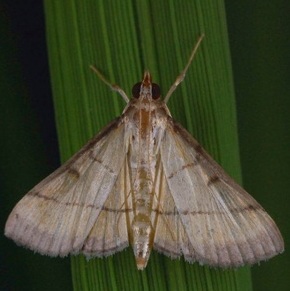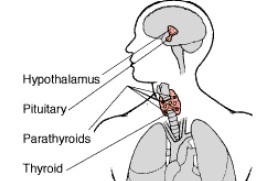An ant colony is the basic family unit around which ants organize their lifecycle.
Ant colonies are Eusocial which means living in a cooperative group in which usually one female and several males are reproductively active and the non-breeding individuals care for the young and protect the group. These are very much like those found in other social animals though the various groups of these developed sociality independently through convergent evolution.
The typical colony consists of one or more egg-laying queens, a large number of sterile females called as workers and, a large number of winged sexual males and females. Periodically, swarms of the winged males and females that are to take part in sex, depart the nest in great nuptial flights. The males die shortly thereafter, along with most of the females. A small percentage of the females survive to initiate and organize building of new nests.
An ant colony usually lives in a specific micro habitat called as an ant hill. Usually, super colonies with very large number of members live In an Ant Hill.
The ant- colony is built and maintained by legions of worker ants, which carry tiny bits of dirt and pebbles in their mandibles and deposit them near the exit of the colony. They normally deposit the dirt or vegetation at the top of the hill to prevent it from sliding back into the colony, but in some species, they actively sculpt the materials into specific shapes, and may create nest chambers within the mound.
Bee Colony
Honey bees are social insects. It means that they live together in large, well-organized family groups. Social insects are highly evolved insects that engage in a variety of complex tasks not practiced by the multitude of solitary insects. Communication, complex nest construction, environmental control, defence, and division of the labour are just some of the behaviours that honey bees have developed to exist successfully in social colonies.
The fascinating behaviours make social insects in general, and honey bees in particular, among the most fascinating creatures on earth.
A honey bee colony typically consists of three kinds of adult bees: workers, drones, and a queen. Several thousand worker bees cooperate in nest building, food collection, and brood rearing. Each member has a definite task to perform, related to its adult age. But surviving and reproducing take the combined efforts of the entire colony. Individual bees (workers, drones, and queens) cannot survive without the support of the colony. In addition to thousands of worker adults; a colony normally has a single queen and several hundred drones during late spring and summer.
The social structure of the bee colony is maintained by the presence of the queen and workers and depends on an effective system of communication. The distribution of chemical pheromones among members and communicative “dances” are responsible for controlling the activities necessary for colony survival.
Labour activities among worker bees depend primarily on the age of the bee but vary with the needs of the colony. Reproduction and colony strength depend on the queen, the quantity of food stores, and the size of the worker force. As the size of the colony increases up to a maximum of about 60,000 workers, so does the efficiency of the colony.




